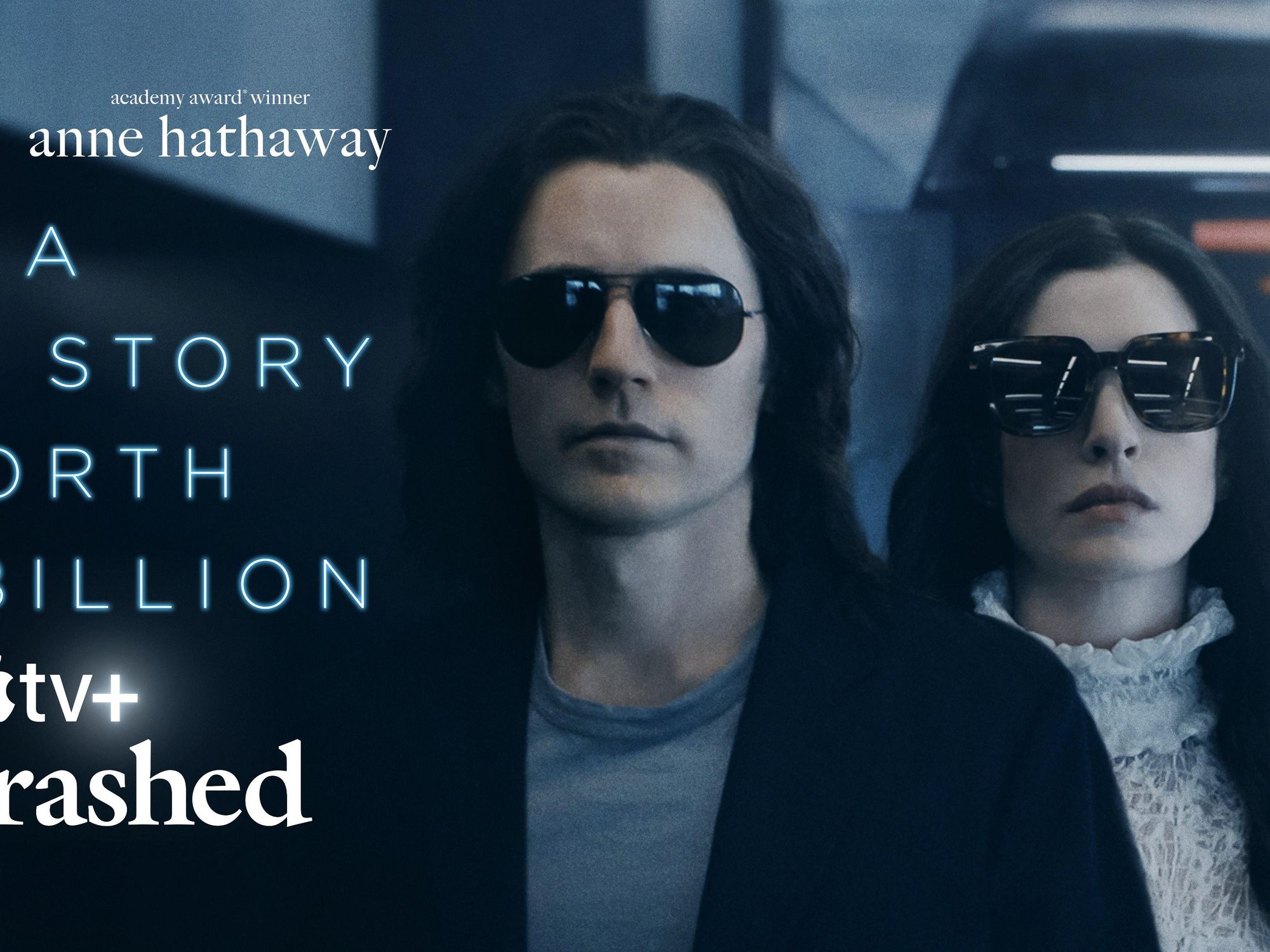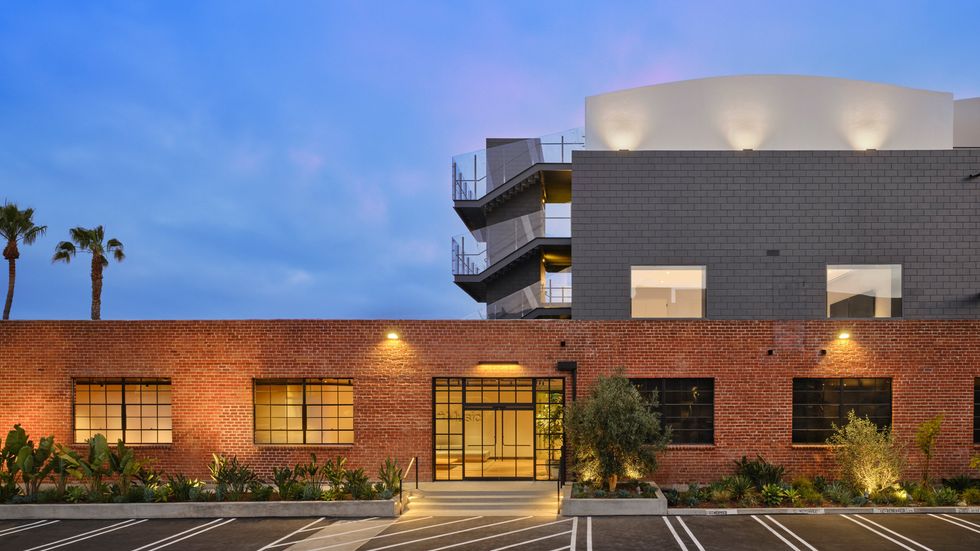'We're Fascinated by Mad Geniuses': How the Startup Horror Story Became a Hollywood Subgenre
Christian Hetrick is dot.LA's Entertainment Tech Reporter. He was formerly a business reporter for the Philadelphia Inquirer and reported on New Jersey politics for the Observer and the Press of Atlantic City.

Hollywood’s new favorite TV genre is the bad startup founder.
Within the last month alone, streaming services have released a flurry of shows about the rapid rise and fall of real-life tech moguls. There’s “The Dropout” (starring Amanda Seyfried), a Hulu miniseries that tells the origin story of Theranos founder Elizabeth Holmes, who went from being the youngest self-made woman billionaire to a potential inmate in federal prison. Showtime’s “Super Pumped” (starring Joseph Gordon-Levitt) chronicles Travis Kalanick—“TK” to his friends—who resigned as Uber’s CEO in disgrace after a spate of scandals, including his handling of sexual assult allegations.
And last week, Apple TV released “WeCrashed,” an eight-episode drama about WeWork founder Adam Neumann (Jared Leto), whose eccentric behavior and failed initial public offering cost him control of the coworking company.
It’s easy to see why the collapse of unicorn founders makes for good TV, with hubristic and charismatic protagonists who quickly become some of the wealthiest people on the planet—only to fail in epic fashion. These tales of incredible successes and downfalls usually contain a mix of tragedy and comedy, and the fact that they’re true stories with high stakes makes them especially appealing, Hollywood observers say.
“Whether it's in comic books like ‘Doctor Strange’ or whether it's in real life like Steve Jobs, we're fascinated [and] enthralled by mad geniuses,” said Tom Nunan, a lecturer at the UCLA School of Theater, Film and Television. “And that's what all of these tech stories have in common.”
WeCrashed — Official Teaser | Apple TV+
The shows also reflect the current zeitgeist around big tech, and companies that have—or promised to—transform the way that people work, shop, and socialize, for better and worse. It was likely only a matter of time before that subject matter seeped its way into TV and movies.
“The shows coming out right now, they have less to do with Hollywood and more to do with where we are as a culture and as an economy,” Drew Crevello, executive producer of “WeCrashed,” told dot.LA.
Crevallo said he hopes these shows cause people to ask questions about why we mythologize “Messianic founders,” and how the huge sums of money sloshing around these companies can lead to reckless decisions. But Crevallo’s fellow executive producer, Lee Eisenberg, said what drew them to the WeWork saga was the love story between Neumann and his wife, Rebekah (played by Anne Hathaway).
“We both love rise-and-fall stories, and are fascinated both by the rise and in the schadenfreude as you watch the fall,” Eisenberg said. “But again, this love story at the center of it felt like such an interesting way into the story.”
The first three episodes of “WeCrashed” dramatize the early days of the couple’s relationship, from a disastrous first date to their wedding. All the while, Neumann rises from a failed entrepreneur hawking baby onesies with knee pads to the top of a successful office coworking startup. Mimicking Neumann’s Israeli accent, Leto portrays the founder as a charismatic but ethically dubious leader, who at one point secures a lease by getting a landlord drunk enough to sign it.
One factor possibly driving the flurry of bad entrepreneur stories is the marketing advantage that comes with well-known intellectual property, said UCLA professor Nunan. Uber, WeWork and Theranos are brands that have spent years in the headlines—and just as there seems to be an infinite number of Marvel movies, there is a growing list of books, podcasts, documentaries and dramas dedicated to big-name startup founders.
The Theranos drama alone inspired a best-selling book, an HBO documentary and a movie project starring Jennifer Lawrence, as well as the ABC News podcast from which the Hulu show is adapted. “Super Pumped,” based on a 2019 book of the same name, plans to focus its second season on Facebook and Mark Zuckerberg, who already got the film treatment in 2010’s “The Social Network.” “WeCrashed” is based on a podcast created by West Hollywood-based Wondery, one of two separate podcasts about WeWork.
The First Amendment grants anyone the right to make a movie or show about true events, so long as they don’t knowingly include anything defamatory, experts say. But adapting the show from a book or podcast comes with a few advantages. The sourcing may fill in some gaps in the story or present the facts in a unique way—such as capturing the setting and tone of a dramatic board meeting—and obtaining the rights to those reported accounts adds some extra legal cover.
“No one has a right to any facts, but you can have a right in the way you describe how those facts went down,” said Jesse Saivar, a digital media and IP attorney for Los Angeles-based law firm Greenberg Glusker. “Even if that meeting actually happened, the author of the nonfiction work still put something in to make it a dramatic scene.”
Super Pumped: The Battle for Uber (2022) Official Trailer | SHOWTIME
The new crop of shows contain juicy details about the scandalous startups in question that go well beyond a tense meeting. The third episode of “WeCrashed,” for example, spends a considerable amount of time on the binge drinking, coworker hookups and sexual harassment that plagued WeWork. But as Bloomberg recently noted, the show mixes reality and fiction to tell the startup’s story—so while employees did reportedly step on used condoms in WeWork meditation rooms, the Apple TV show takes things a step further by depicting a “f--- closet.”
“When someone's making a show around public events, they have quite a bit of leeway to tell the story,” Saivar said. He noted that public figures need to meet a higher standard to win defamation cases by proving that creators knowingly inserted false information that was harmful.
Eisenberg said “WeCrashed” did not have to obtain rights, citing the countless articles that have been written about WeWork. He said the show hired researchers and spoke with former employees and prospective investors, but did not interview the Neumanns themselves.
“What we wanted to do was tell a 360-degree view, so that's why talking to all those other people was so imperative,” Eisenberg said. “We’ve [already] heard Adam and Rebekah's version of events.”
Some observers have lumped the startup horror stories into a growing TV and movie genre—let’s call it the “Con Artist Story”—that more broadly includes modern-day snake oil salespeople. In February alone, Netflix released two such tales: “Inventing Anna,” about a Russian-born grifter who posed as a German heiress to bilk American elites, and “The Tinder Swindler,” about a guy who stole millions of dollars from women he met on dating apps after fraudulently claiming to be a “prince of diamonds.”
In fact, rival streaming services have previously released dueling stories about the same con artists, virtually simultaneously. In 2019, Netflix and Hulu both aired documentaries about Fyre Festival, the much-hyped music fest that promised guests a luxurious weekend on a Bahamian Island—only to leave them stranded with little more than cheese sandwiches. The festival’s fraudster, Billy McFarland, was eventually sent to prison.
But among the startup founders now being dramatized on TV, only Holmes was convicted of any crimes.
“What's interesting to us about WeWork is that it exists in the gray,” Eisenberg said. ”We want the audience at the end to debate whether or not he was a con man—or if he believed in everything he said.”
Christian Hetrick is dot.LA's Entertainment Tech Reporter. He was formerly a business reporter for the Philadelphia Inquirer and reported on New Jersey politics for the Observer and the Press of Atlantic City.




 Image Source: Tinder
Image Source: Tinder Image Source: Apple
Image Source: Apple